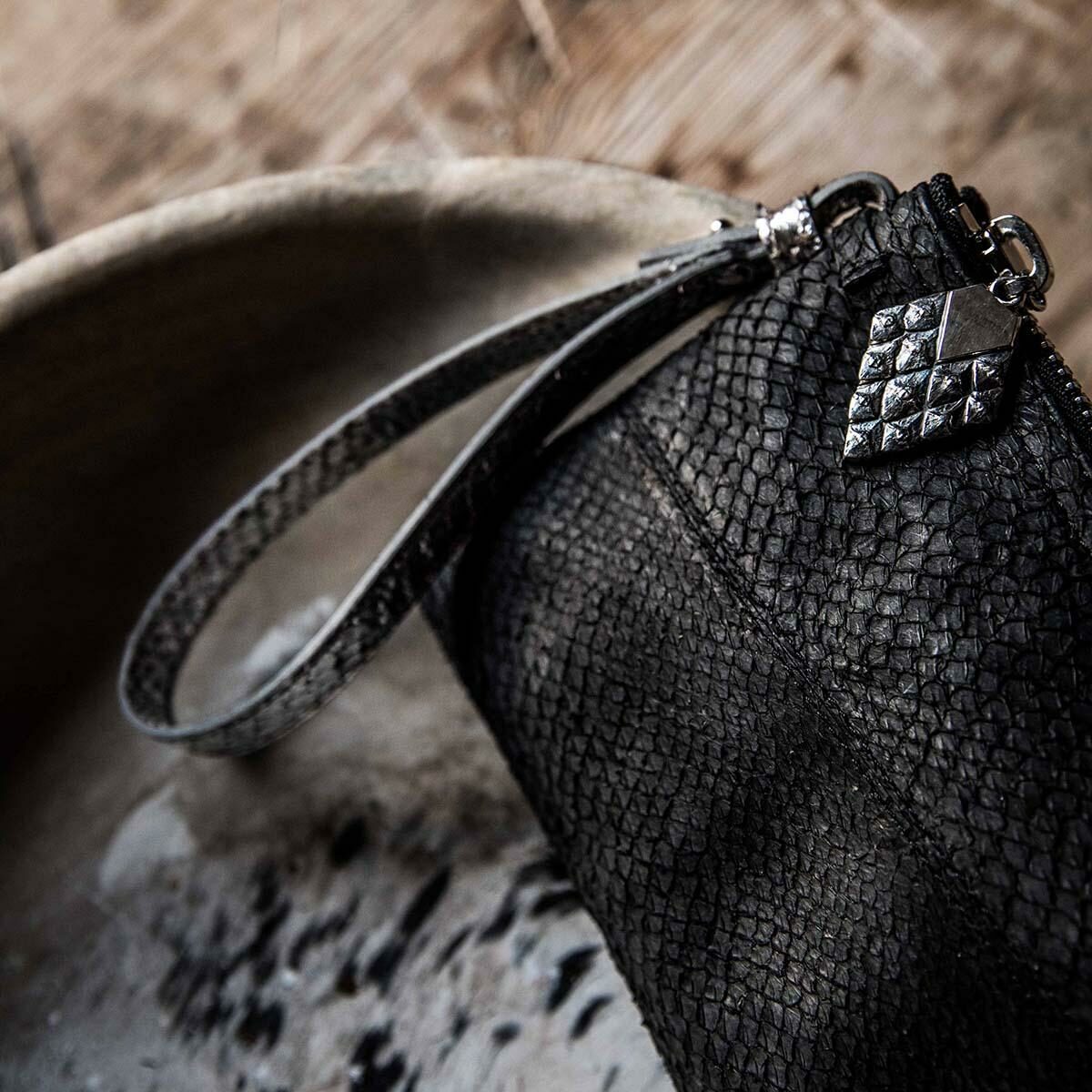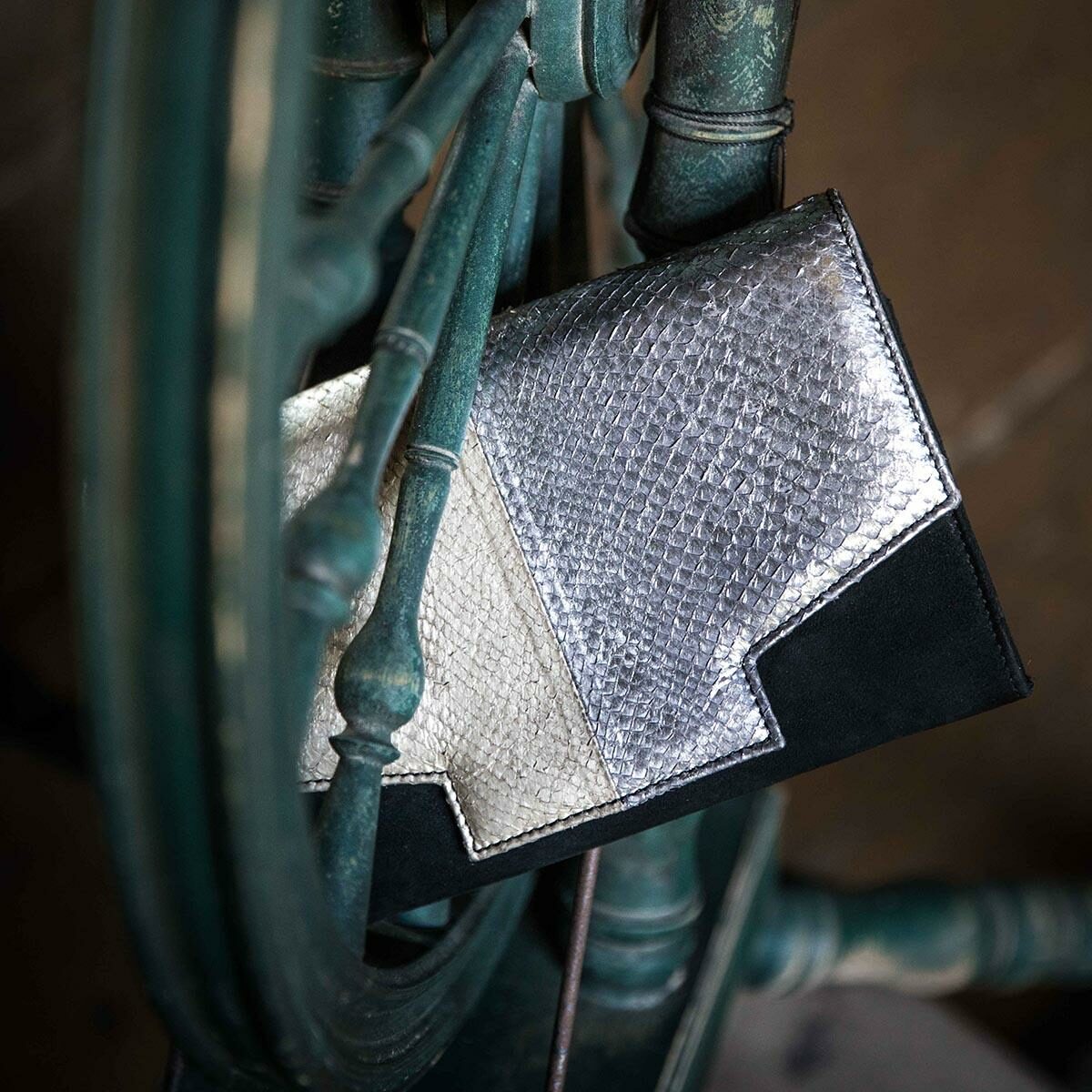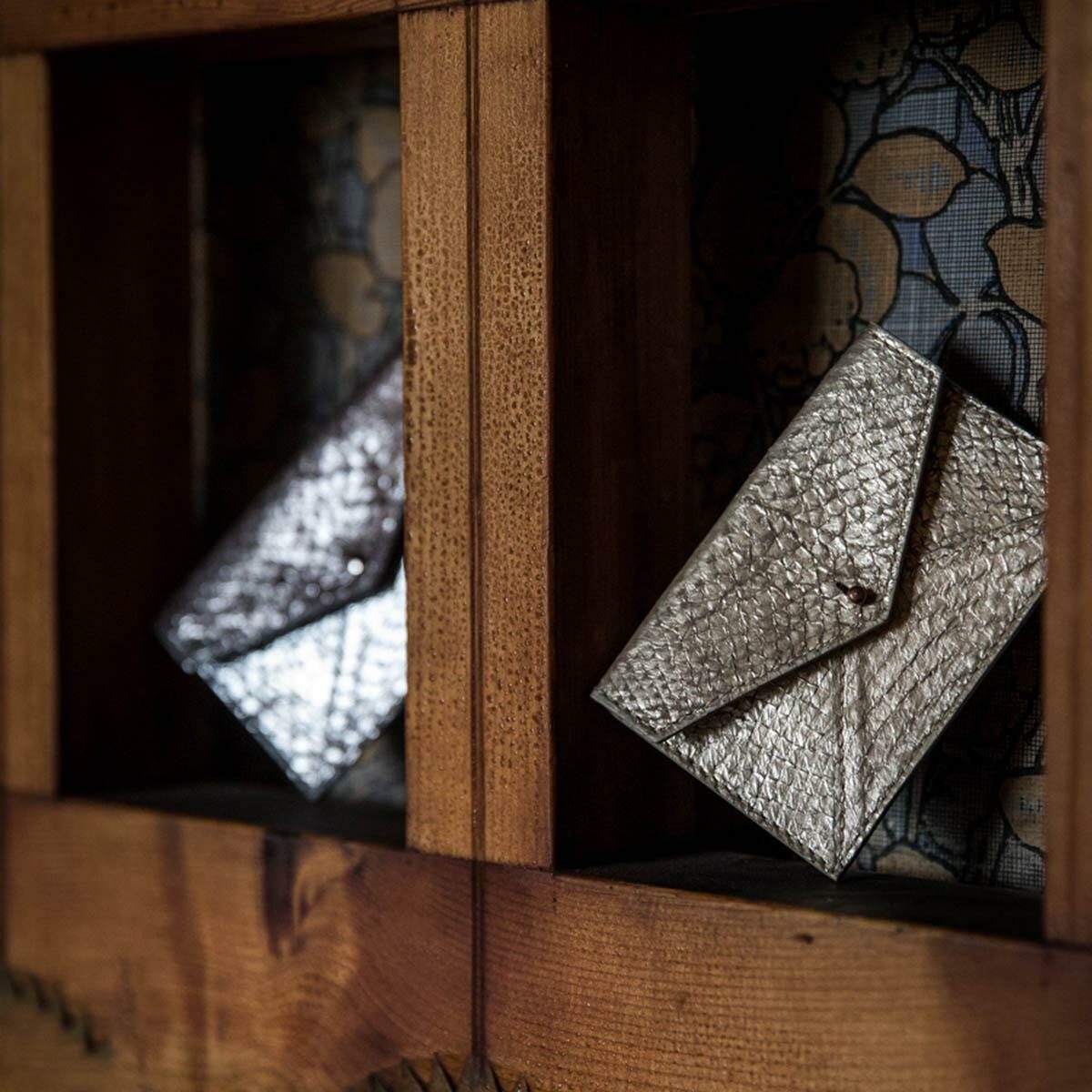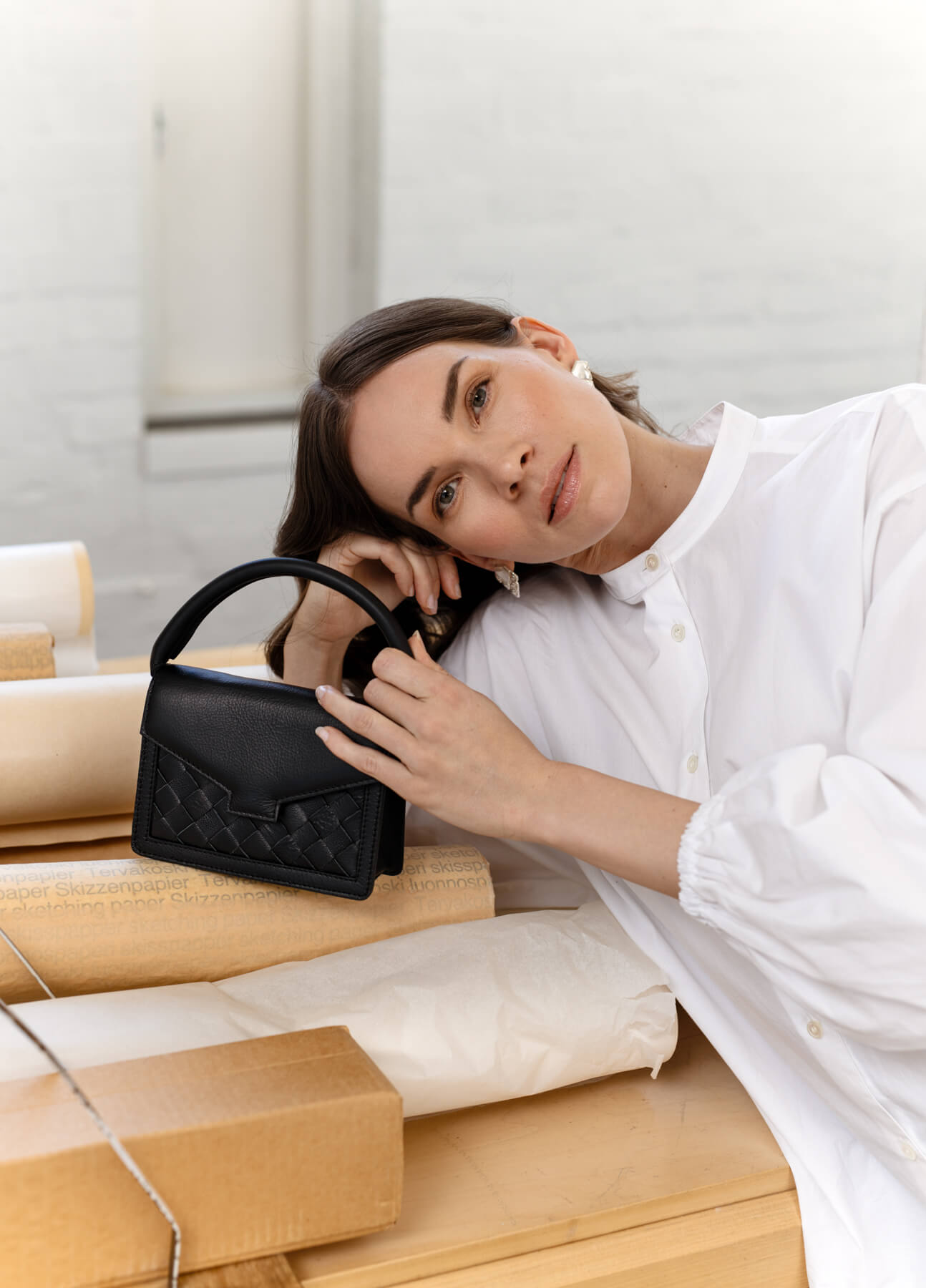Ulla Haverinen
Natural fish leather
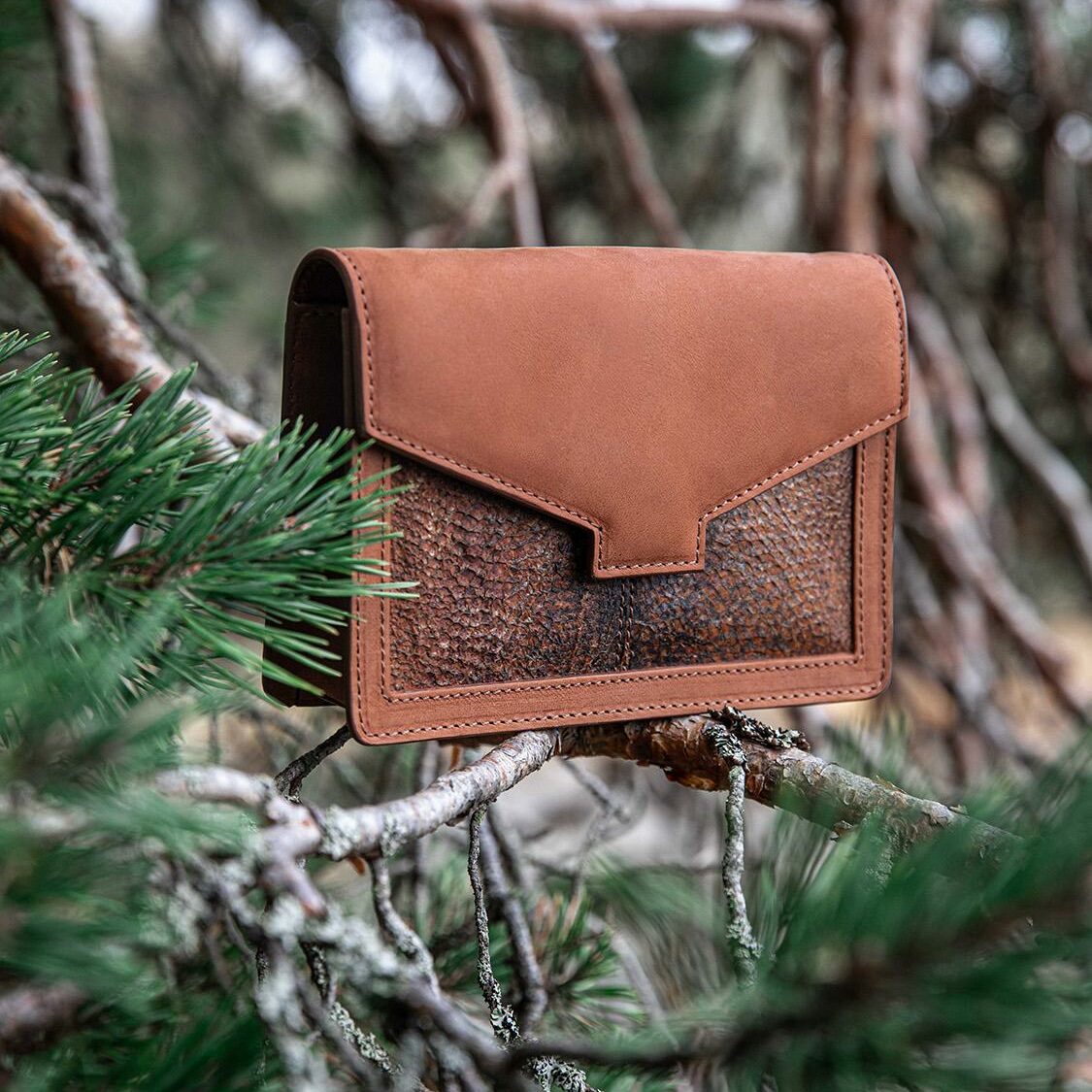
A by-product of fishing put to use
At the heart of circular thinking lies the idea of utilising existing materials as efficiently as possible instead of constantly creating anew. The fish skins, born as a by-product of fishing from Ulla Haverinen are utilised in our bags, following this train of thought.
The fishing and gutting for cooking sparked the interest for Ulla Haverinen to test out the tanning of different fish species’ skins starting from 2017. They fish for the use of their own family, but nowadays they also store the skins for additional use, making waste minimal. Before hitting the trash, the skins now get a new life as material for bags.
ESTABLISHED: 2017
EMPLOYEES: 2
LOCATION: KUHMO, FINLAND
From old designs into modern design
The use of fish skin has long traditions, and already the native peoples are known to have utilised it as material for accessories, such as bags and shoes. Fish leather was also made in Finland during the second World War, but after that its utilisation has been rather minimal. To diminish the strain on our environment, solutions are required; here, the solution has been found from age-old traditions re-lived for modern times.
The fish tanned by Ulla Haverinen have their origins in Kainuu, at the Vieksinjoku, Kylmänjärvi and Ontonen areas in Kuhmo. Fish is caught with multiple methods, with nets, trolling or in the winter even ice fishing. They catch pike, pike perch and perch. In order to get durable material for bags out of fish skins, it must be tanned. Ulla utilised vegetable tanning for this purpose. She creates the tanning stock from the bark of a tree, such as a willow or fir, mixed with water, salt, traditional pine soft soap, canola oil and beeswax. After this the leather is slowly dried and rubbed with canola oil, until the leather is dry and soft. Usually the entire process takes roughly 3-4 weeks, until it is ready to be put to use in its new purpose.
As a material fish skin is soft but extremely durable, especially when bigger fish are utilised. So, pretty much perfect for long-lasting bags! After the tanning the fish skins travel from Kuhmo to the design table of our creative director Outi, where they gain new life in bags.

Greetings from Kuhmo
"We want to give our partners the chance to make their voice heard, because without them our dream of utilising excess materials would stay as a dream, and not reality. Here we gathered a few greetings from Ulla Haverinen herself, straight from Kuhmo.
“I began to research and test out the tanning of fish skins in 2017. Utilising fish in cooking and catching it had made me inspired to explore. The different patterns seen in fish skins have always intrigued me and it is very interesting to see the end result of my own craft! Another big inspiration has been Lovia and my daughter, Outi. Her use of materials and being able to follow the design process up close has been amazing.
I do all the work by hand, without any machinery or other aids. It is challenging and requires persistence, but also so rewarding in the end. Collaborating with Lovia is care-free and I truly feel a part of the team and that my skills are valued. It is amazing seeing my work in the ready products, coming to life. At the same time I am able to salute an age-old tradition, in contrast to modern industrial production methods.”
-Ulla Haverinen
Where can we do better?
With Ulla we have been able to find a way to utilise fish skin with traditional methods, that are otherwise nearly lost. In the future we would love to discover tanning methods suitable for small production and also bring the old traditions into modern day.
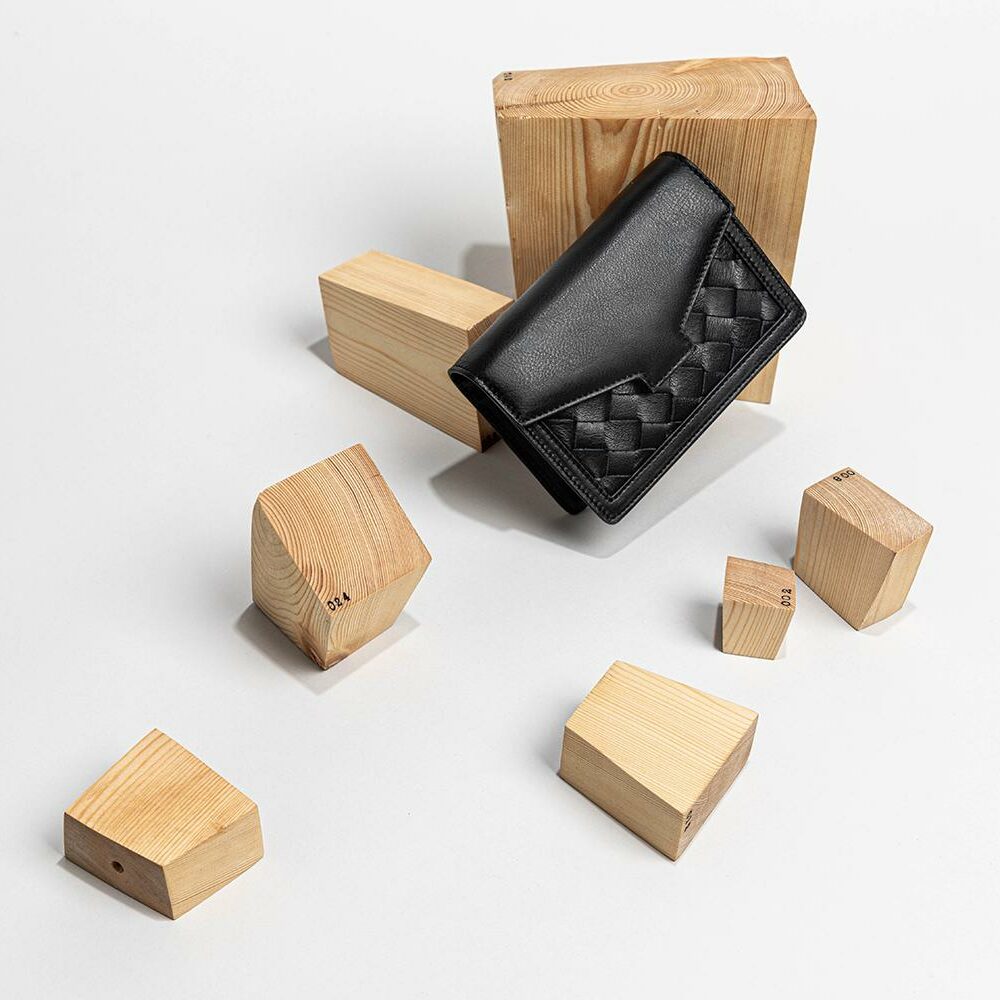
ulla haverinen
natural fish leather
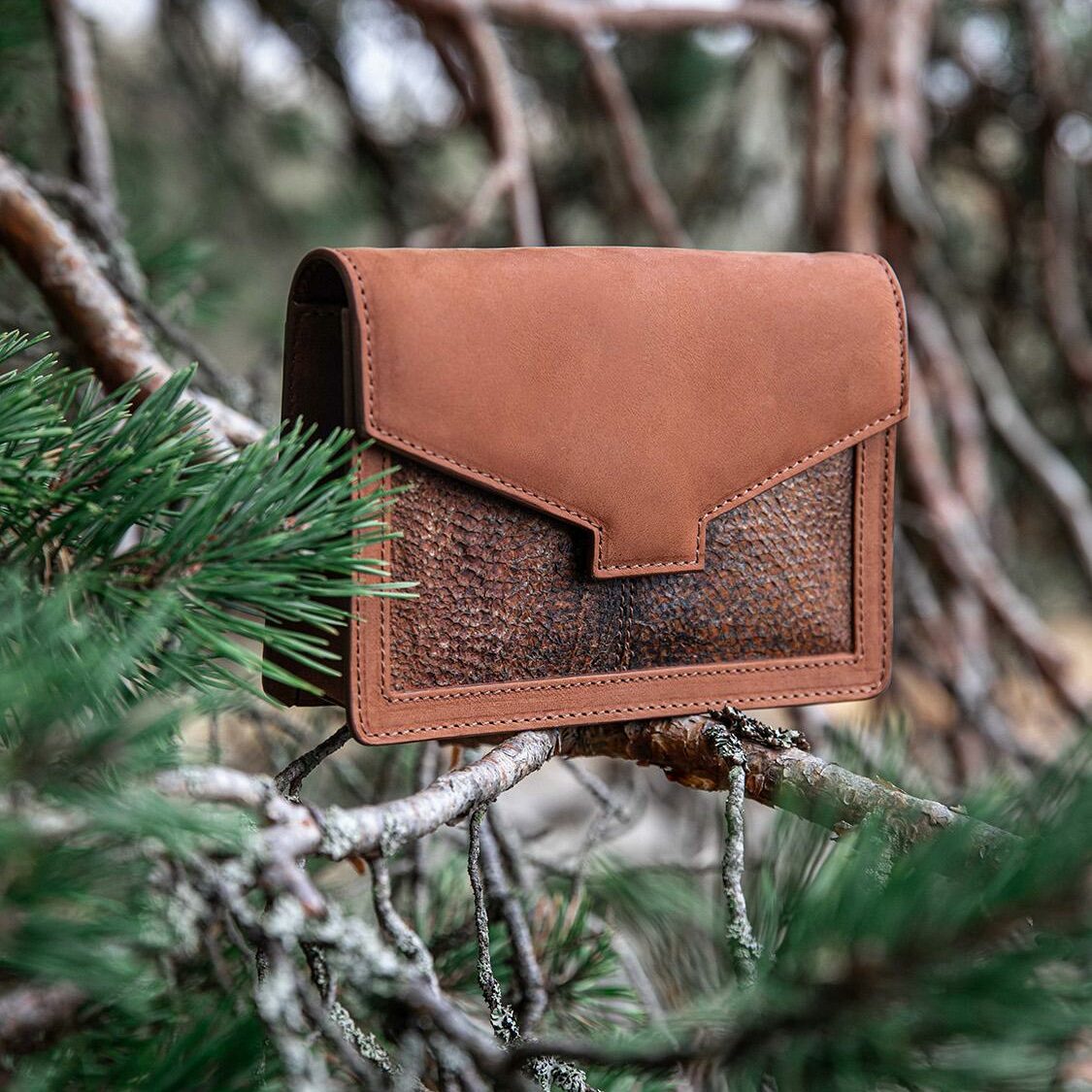
A by product of fishing put to use
At the heart of circular thinking lies the idea of utilising existing materials as efficiently as possible instead of constantly creating anew. The fish skins, born as a by-product of fishing from Ulla Haverinen are utilised in our bags, following this train of thought.
The fishing and gutting for cooking sparked the interest for Ulla Haverinen to test out the tanning of different fish species’ skins starting from 2017. They fish for the use of their own family, but nowadays they also store the skins for additional use, making waste minimal. Before hitting the trash, the skins now get a new life as material for bags.
ESTABLISHED: 2017
EMPLOYEES: 2
LOCATION: KUHMO, FINLAND

From old designs into modern design
The use of fish skin has long traditions, and already the native peoples are known to have utilised it as material for accessories, such as bags and shoes. Fish leather was also made in Finland during the second World War, but after that its utilisation has been rather minimal. To diminish the strain on our environment, solutions are required; here, the solution has been found from age-old traditions re-lived for modern times.
The fish tanned by Ulla Haverinen have their origins in Kainuu, at the Vieksinjoku, Kylmänjärvi and Ontonen areas in Kuhmo. Fish is caught with multiple methods, with nets, trolling or in the winter even ice fishing. They catch pike, pike perch and perch. In order to get durable material for bags out of fish skins, it must be tanned. Ulla utilised vegetable tanning for this purpose. She creates the tanning stock from the bark of a tree, such as a willow or fir, mixed with water, salt, traditional pine soft soap, canola oil and beeswax. After this the leather is slowly dried and rubbed with canola oil, until the leather is dry and soft. Usually the entire process takes roughly 3-4 weeks, until it is ready to be put to use in its new purpose.
As a material fish skin is soft but extremely durable, especially when bigger fish are utilised. So, pretty much perfect for long-lasting bags! After the tanning the fish skins travel from Kuhmo to the design table of our creative director Outi, where they gain new life in bags.
Greetings from Kuhmo
"We want to give our partners the chance to make their voice heard, because without them our dream of utilising excess materials would stay as a dream, and not reality. Here we gathered a few greetings from Ulla Haverinen herself, straight from Kuhmo.
“I began to research and test out the tanning of fish skins in 2017. Utilising fish in cooking and catching it had made me inspired to explore. The different patterns seen in fish skins have always intrigued me and it is very interesting to see the end result of my own craft! Another big inspiration has been Lovia and my daughter, Outi. Her use of materials and being able to follow the design process up close has been amazing.
I do all the work by hand, without any machinery or other aids. It is challenging and requires persistence, but also so rewarding in the end. Collaborating with Lovia is care-free and I truly feel a part of the team and that my skills are valued. It is amazing seeing my work in the ready products, coming to life. At the same time I am able to salute an age-old tradition, in contrast to modern industrial production methods.”
-Ulla Haverinen
Where can we do better?
With Ulla we have been able to find a way to utilise fish skin with traditional methods, that are otherwise nearly lost. In the future we would love to discover tanning methods suitable for small production and also bring the old traditions into modern day.


